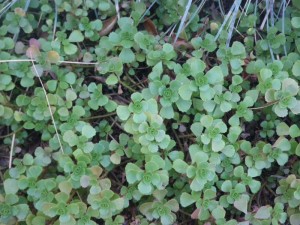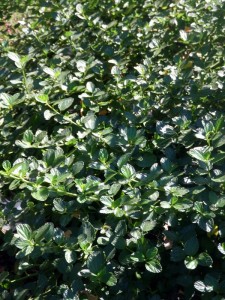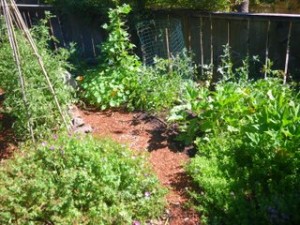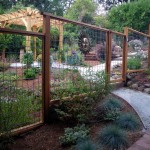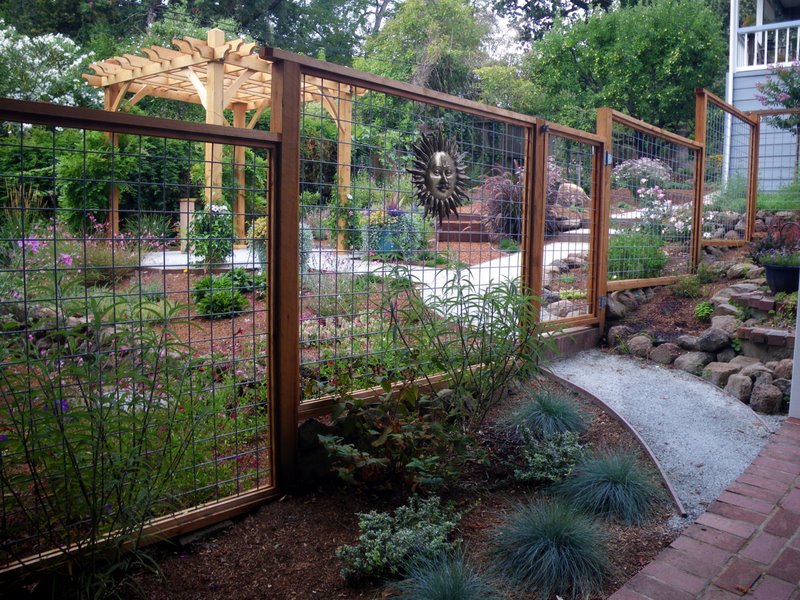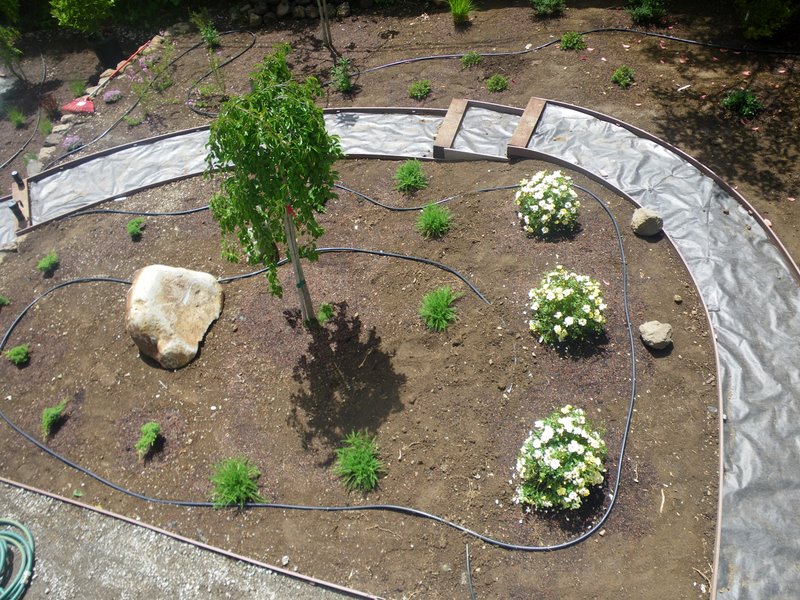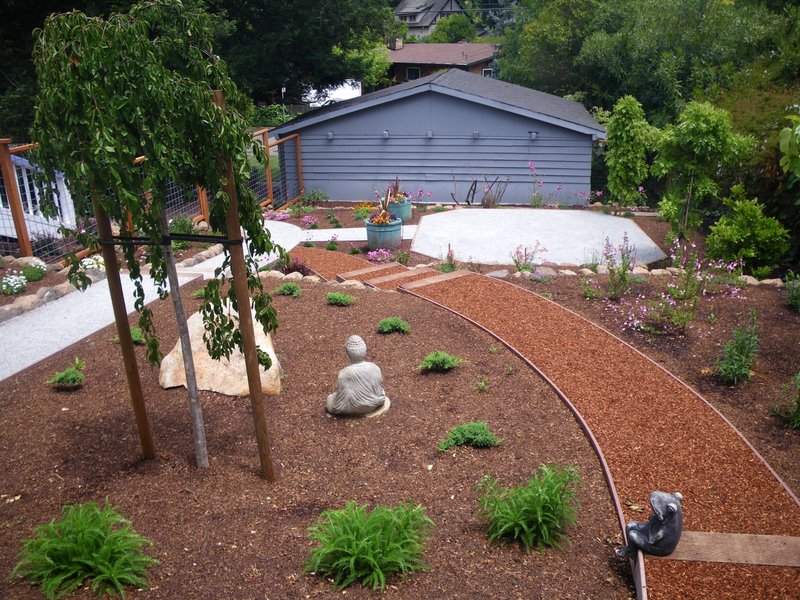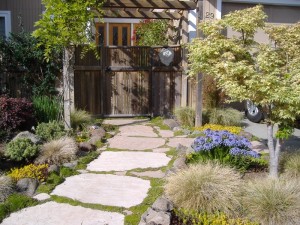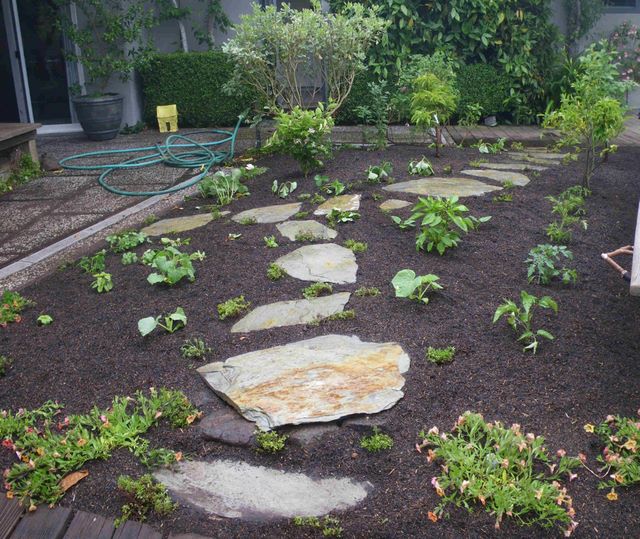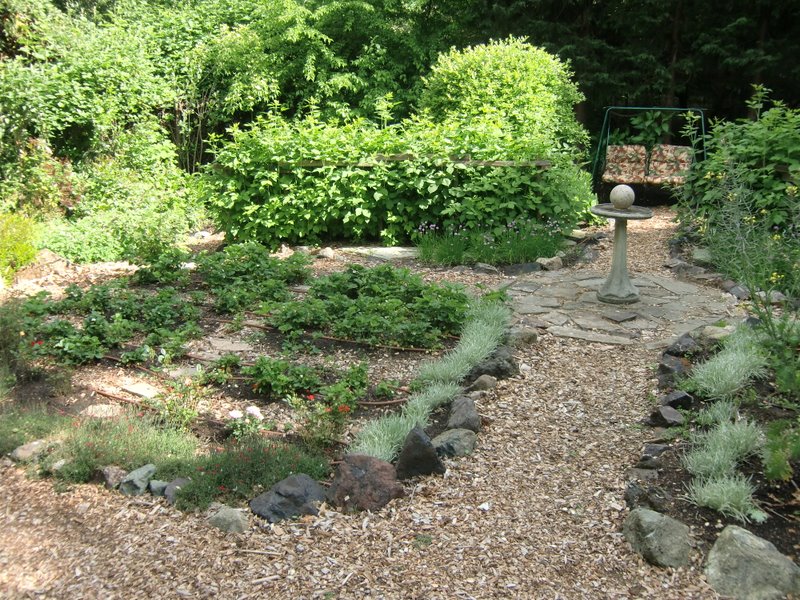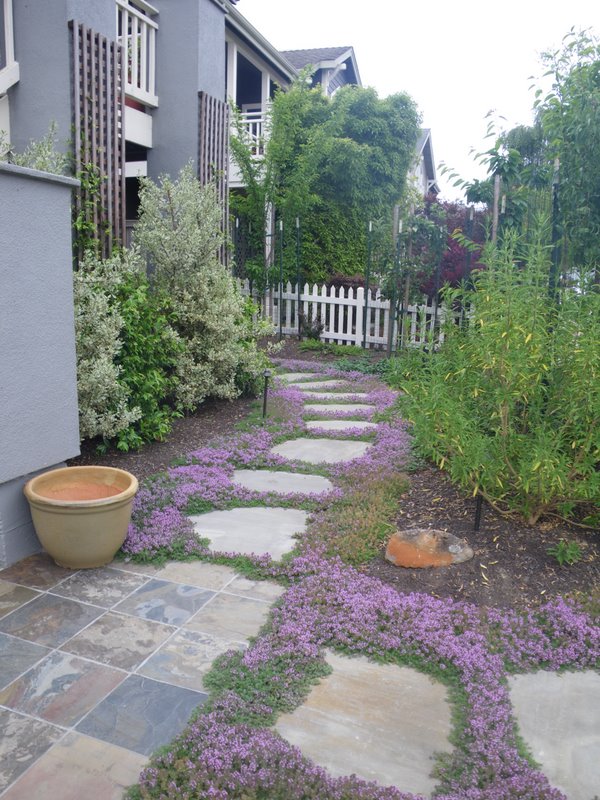In this post I want to address the issue of weed barriers. Most garden supply stores will sell rolls of weed cloth made from polyethylene. It may have holes to allow water and air through it, but it is not biodegradable and will not break down. It will break up, however, leaving you with lots of torn pieces of useless plastic in your yard. It keeps the weeds down for a short while, but soon, the mulch you’ve put down to cover it, will turn to soil and weed seeds will blow in and grow on top of the plastic.
(Two exceptions: Gardener’s Supply sells Biodegradeable Sheeting. Amazon sells a biodegradable paper mulch too. )
When planting an area that you don’t want weeds in, think of planting a ground cover that grows thickly and will make what we call a living mulch. The more your soil is covered the less trouble you’ll have with weeds. In the short period of time it takes for the plants to fill in, you will probably have to do some weeding by hand. Over time this will soon drop to almost zero weeding.
The plant in the photo at the top of the post, is a very low growing ground cover in the Sedum family. It will grow thickly, need little care and prevent weeds from sprouting. Another type of ground cover is a low growing herbaceous shrub like the Ceonothus griseus, pictured below. One plant can spread to 8 – 10 feet in diameter. It needs little water, and grows to about 2′ high. You can see how dense it is. No weed barrier, no weeds, just a very nice planting.
The weed barriers that I like to use the most are cardboard, old sheets, towels and blankets and even old rugs. Most people are shocked when I tell them my paths are covered in old sheets. These materials definitely keep the weeds from growing, but they are also biodegradable and will eventually go back into the soil. This means they don’t last forever, but they’re free, garden worthy and will improve your garden, not harm it.
In paths I peg the material down on the leveled path and then cover it with chips.You can see in the picture on the left that the casual path can look very nice with free chips that one can get from your local tree trimmer.
When deciding which weed barrier to use, always ask yourself what the long term effects will be. Which is the best for the garden, the planet, and your pocket book. In the case of old cotton sheets and chips, it’s a win – win situation for you and your edible landscape.
P.S. If you prefer to use custom made fabrics for your sheet mulching, Amazon and Gardeners Supply
sell some good products. Both of these links I’ve provided will take you directly to fabrics for sheet mulching.

